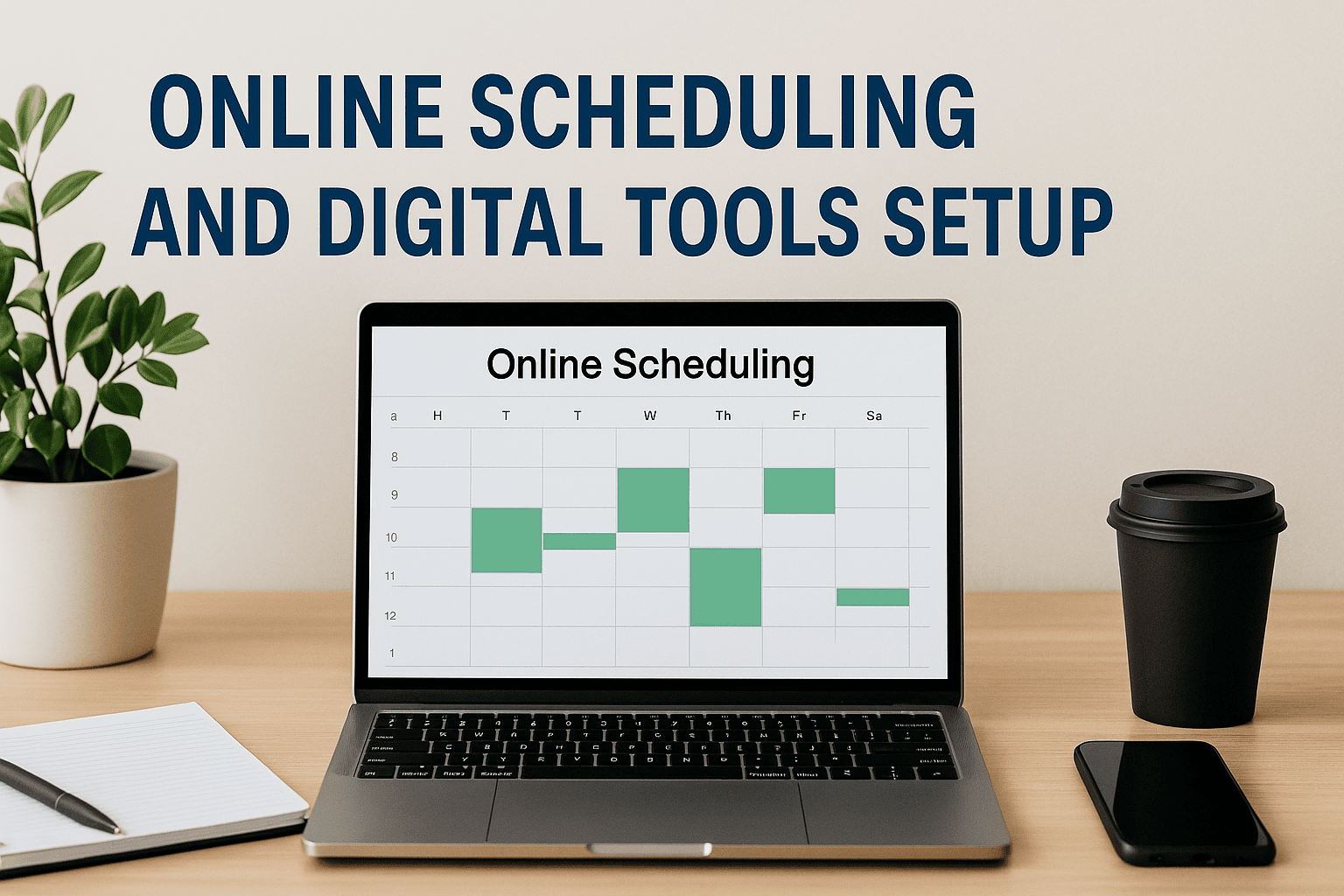How to Virtualize Your Business in Today’s Digital World
In a world that’s rapidly shifting toward convenience and technology, one of the smartest moves you can make as a business owner is to virtualize your business. Whether you're a notary, consultant, coach, or creative entrepreneur, going virtual allows you to serve more people, reduce overhead, and position yourself for long-term sustainability.


What Does It Mean to “Virtualize” Your Business?
Virtualizing your business means moving your operations, services, or client interactions online. It doesn’t necessarily mean you eliminate all in-person interactions, but rather you add digital pathways that give your business more flexibility and scalability.
Why Go Virtual?
📈 Reach More Clients – No longer bound by geography, you can serve clients in other cities, states, or even countries.
💼 Operate More Efficiently – Save time and money on travel, office rent, and paper processes.
💻 Stay Competitive – The modern consumer expects digital convenience. If you’re not offering it, someone else is.
🔐 Build Resilience – A virtual model allows you to operate even during unexpected events like health crises or natural disasters.
Step-by-Step: How to Virtualize Your Business
1. Audit Your Services
Start by identifying what can be offered virtually.
Can you consult, teach, or review documents online?
Can you digitize your intake forms or offer Zoom appointments?
For notaries, this could mean adding Remote Online Notarization (RON) services or using secure platforms like NotaryCam or OneNotary.
2. Invest in the Right Tools
Some essential tools to go virtual include:
A secure video conferencing platform (Zoom, Google Meet, etc.)
Cloud storage (Google Drive, Dropbox, etc.)
E-signature platforms (DocuSign, SignNow)
Online booking systems (Zoho Bookings, Calendly)
A responsive, mobile-friendly website
3. Digitize Client Experience
From the moment a client visits your site to the follow-up after service, aim to make their experience seamless.
Offer online scheduling
Enable digital payments
Provide automated confirmations and reminders
4. Create a Virtual Workspace
Set up a professional digital environment. This includes:
A clean, branded Zoom background or virtual office setting
High-quality webcam and mic setup
Professional attire (yes, even on camera!)
Your presence online should reflect the same professionalism as it would in-person.
5. Update Your Marketing
Make sure your branding speaks to your virtual services.
Use terms like “nationwide,” “online,” “digital access,” and “remote-friendly” on your site and social media
Promote virtual offerings with client testimonials, behind-the-scenes reels, or demos
6. Ensure Compliance & Security
Depending on your industry, you may need to ensure your virtual processes are secure and compliant.
Use encrypted platforms for document transfers
Understand any state or industry-specific regulations for online services
As a notary, for instance, make sure your RON provider is state-approved and your e-seals are protected.

Final Thoughts: The Future Is Virtual
Virtualizing your business doesn’t mean giving up your personal touch—it means expanding it. By removing physical limitations, you're creating more freedom for your clients and yourself.
Remember, convenience is currency. The more accessible and efficient your services are, the more valuable they become in the eyes of your customers.
So ask yourself today:
How can I start operating like the business of the future—right now?

